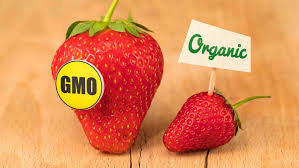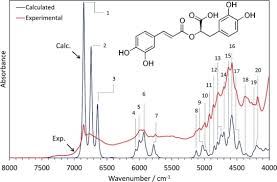We are now in a revolution, we are now in a period where the food production industry is witnessing significant changes due to the introduction and uprise of the “game-changers” in agriculture, genetically modified organisms (GMOs).
What Are They Anyway?
Genetically Modified Organisms, or GMOs, are living organisms whose genetic material has been artificially manipulated in a laboratory through genetic engineering. This process involves inserting the DNA from different species into an organism's genome to introduce new traits or characteristics that do not occur naturally. GMOs are commonly used in agriculture to create crops that are resistant to pests, herbicides, or environmental conditions. It comes useful bits including potentially increasing yield and reducing the use of chemical pesticides. While others argue that GMOs can help address global food security issues, critics express concerns about potential long-term health and environmental impacts. The debate surrounding GMOs continues to be a topic of scientific research, public discourse, and regulatory scrutiny worldwide.
Now That That’s Done…
Well like all revolutions, there are bound to be some concerns raised here and there, and in this case, some concerns have been raised in the broad areas of food safety and labelling, with GMOs in view. As the global debate on GMOs continues, there is an increasing need for rapid, yet accurate methods that are cost-effective, to detect and quantify GMOs in food products.
And like that one hero in every story, who springs up turning the tides around, even in the state of waiting and wondering and anticipation of the “what next?”, near-infrared spectroscopy (NIRS) has emerged as a promising tool in this field, offering numerous advantages over traditional analytical methods (Zaukuu et al., 2020).
So How Does It Work?
Before we delve into it, there is something you need to know: “NIRS involves fingerprints!”. Sounds strange? It is not. Let us take it a step-at-a-time; it involves interactions between near-infrared radiation and organic molecules present in the substances being analysed. The molecules absorb the radiation at wavelength range of 750-2500 nm, and at the end of it all, it provides information about the chemical composition of the samples. When near-infrared light interacts with a sample, specific molecular bonds within the organic molecules absorb some of the light, while others are reflected or transmitted. Spectral data is generated provides a unique "fingerprint" of the sample's chemical composition.
The samples absorb energy at characteristic wavelengths, resulting in a unique spectral fingerprint (Pasquini, 2018). This non-destructive technique requires minimal sample preparation and can analyze multiple components simultaneously.
Applications in GMO Detection
NIRS has shown remarkable potential in distinguishing between GMO and non-GMO crops. There have been several studies that have demonstrated its efficacy in detecting genetic modifications in various agricultural products:
1. Soybean: Researchers have successfully used NIRS to differentiate between GMO and non-GMO soybeans with high accuracy. As if it is a super-sensor, the technique can detect even the most subtle of changes in protein and oil content associated with genetic modifications (Alishahi et al., 2010).
2. Maize: It has also been applied to identify GMO maize varieties, achieving classification accuracies of up to an impressive 98% in some studies. The method can detect differences in starch structure and composition resulting from genetic alterations (Zaukuu et al., 2019).
3. Rice: Recent investigations have shown that NIRS can effectively discriminate between transgenic and non-transgenic rice varieties, offering a rapid screening method for regulatory compliance (Liu et al., 2014).
Are There Any Pros When it Comes to NIRS in GMO Detection?
The answer is a Yes! NIRS comes with a bouquet of several advantages over conventional GMO detection methods, some of the areas where it overpowers the conventional methods are:
1. Rapidity: NIRS can provide results in just a matter of seconds to minutes, compared to hours or days required for polymerase chain reactions (PCR)-based methods (Zaukuu et al., 2020).
2. Non-destructive analysis: The samples remain intact after analysis, which allows for further testing if needed (Pasquini, 2018).
3. Minimal sample preparation: Unlike DNA-based methods, NIRS requires little to no sample preparation, which reduces analysis time and cost (Alishahi et al., 2010).
4. Portability: The method also presents “an escape” from the lab by enabling on-site testing, through the use of handheld versions of the instruments, thereby facilitating rapid decision-making, whether one is in the field or at processing facilities (Zaukuu et al., 2019).
5. Multi-component analysis: It simultaneously detects multiple GMO traits and assess other quality parameters, providing comprehensive sample information (Liu et al., 2014).
And What Are The Cons - Any Potential Improvements In The Future?
Despite the promising potential of NIRS, it also has some challenges in GMO detection:
1. Sensitivity: NIRS may have lower sensitivity compared to PCR-based methods for detecting low levels of GMO content (Zaukuu et al., 2020).
2. Matrix effects: The complex nature of food matrices can interfere with spectral analysis, necessitating robust calibration models (Pasquini, 2018).
3. Regulatory acceptance: While NIRS shows promise as a screening tool, regulatory bodies may still require confirmatory testing using established methods (Alishahi et al., 2010).
Future research should focus on improving the sensitivity and specificity of NIRS for GMO detection, developing standardized protocols, and validating the method across diverse food matrices. Additionally, the integration of NIRS with other analytical methods, such as chemometrics and machine learning algorithms, could further enhance its capabilities in GMO detection and quantification (Zaukuu et al., 2019).
All That Is Being Said Is…
Near-infrared spectroscopy represents a revolutionary tool for GMO detection in agriculture and food systems. Its rapidity, non-destructive nature, and minimal sample preparation requirements make it an attractive option for high-throughput screening of GMOs. As the technology continues to evolve, NIRS has the potential to become an indispensable tool in ensuring food safety, regulatory compliance, and consumer trust in the global food supply chain.
References
Alishahi, A., Farahmand, H., Prieto, N., & Cozzolino, D. (2010). Identification of transgenic foods using NIR spectroscopy: A review. Spectrochimica Acta Part A: Molecular and Biomolecular Spectroscopy, 75(1), 1-7.
Liu, Y., Wang, J., Fu, X., Ye, Z., & Zhou, C. (2014). Rapid discrimination of transgenic rice using visible/near-infrared spectroscopy. Journal of Food Engineering, 125, 133-139.
Pasquini, C. (2018). Near infrared spectroscopy: A mature analytical technique with new perspectives – A review. Analytica Chimica Acta, 1026, 8-36.
Zaukuu, J. L. Z., Bazar, G., Gillay, Z., & Kovacs, Z. (2019). Emerging trends of advanced sensor based instruments for meat, poultry and fish quality – a review. Critical Reviews in Food Science and Nutrition, 60(13), 2242-2260.
Zaukuu, J. L. Z., Aouadi, B., Lukacs, M., Bodor, Z., Vitalis, F., & Gillay, Z. (2020). Detecting low concentration of nitrogen compounds in fertilizer using near infrared spectroscopy and aquaphotomics. Infrared Physics & Technology, 107, 103293.
Did you find this post useful?
YES
NO



Comments